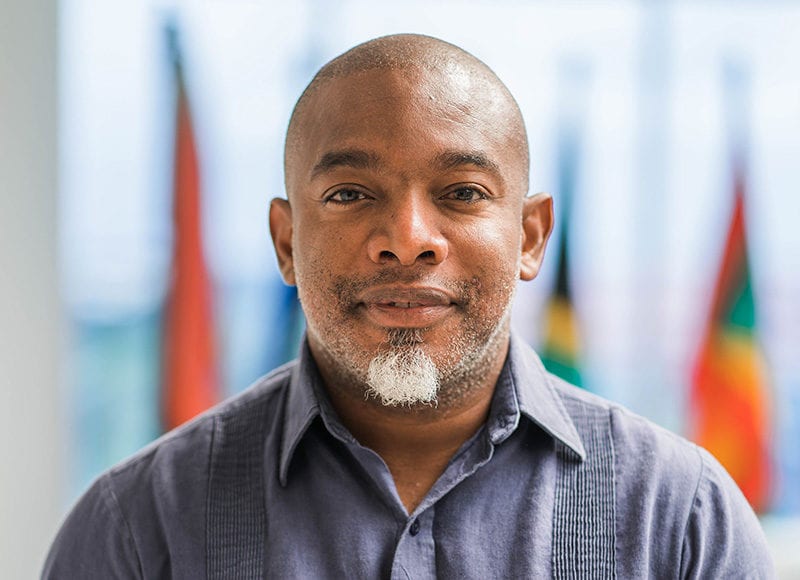Cognizant of the massive hydrocarbon resources in Guyana, Suriname and Trinidad & Tobago, Programme Manager at the Caribbean Community’s (CARICOM) Energy Unit, Dr. Devon Gardner, believes that these three sister countries can be the fulcrum upon which the Caribbean depends on for energy security.
“We think that the finds in Guyana and Suriname actually improve our ability to achieve collective energy security at the CARICOM level,” Dr. Gardner said while adding, “and if other countries were to achieve similar benefits from their own explorations, then that would bring us even closer to that holy grail of regional energy security.”
He was speaking at the time on Kaieteur Radio’s Guyana’s Oil and You aired earlier this week.
Collectively, energy security is one that embraces Guyana, Trinidad and Suriname, Dr. Gardner noted, adding that these three countries can be a hub that supplies natural gas to the entire region.
“A lot of the countries that do not have hydro or solar resources would benefit from the natural gas as a baseload source of power and it would facilitate the ease of those countries being able to implement and integrate large scale solar and wind resources into their systems.”
At the CARICOM level, the Energy Unit Head stated that the regional body is pursuing ways in which countries can cooperate in the exploration and exploitation of fossil fuels. He went on to share that there is also a working group on oil and gas exploration that is seeking to develop common contingency programmes to prepare for spills.
Still on regional energy security, Dr. Gardner said the region should explore options like ocean thermal energy, seawater air conditioning and offshore floating wind turbines.
“Looking offshore is not just an oil and gas option but also a renewable option too. If you think about it, some of these offshore opportunities can support wind, especially because many of the cities are coastal and are actually closer to the sea than some of the areas where the wind resources are. Guyana is a prime example,” he explained.
Meanwhile, Dr. Gardner highlighted that the discoveries in Guyana and Suriname was of no surprise and linked this to preliminary assessments conducted by the United States Geological Survey (USGS). In fact, in 2000, the U.S. Geological Survey identified the Guyana-Suriname Basin as having the second highest resource potential among unexplored oil basins in the world and estimated the mean recoverable oil and gas reserves at more than 13.6 billion barrels.
“What we are seeing is a realization of those preliminary findings. The question is always making sure that the resources that derive from the sale of oil and gas and the royalties will remit to the improvement of the country, the infrastructure, and the investment in people,” Dr. Gardner said. “If that is done properly then there is no stopping Guyana, Suriname, or any country in the Caribbean that came upon similar fortunes.”
Trinidad and Tobago, which has been an oil producer for the past 100 years, currently has a natural gas reserve of 11 trillion cubic feet, while the Guyana – Suriname Basin is estimated to contain 32 trillion cubic feet.
In Guyana, the government, ExxonMobil, and its partners have initiated a gas-to-energy project which will utilize the associated gas from the Liza field. This project is set to come on stream by 2024. Once this is achieved, it is expected to slash electricity costs by more than 50 percent and reduce Guyana’s carbon footprint while fuelling the development of other industries.



